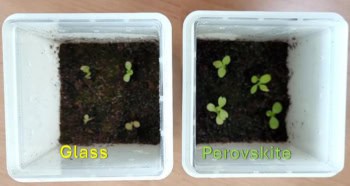
Japanese researchers are closing in on understanding why electrical storms have a positive influence on the growth of some fungi. In a series of experiments, Koichi Takaki at Iwate University and colleagues showed that artificial lightning strikes do not have to directly strike shiitake mushroom cultivation beds to promote growth. Now they are developing technology to use electric stimulation in the production of the mushrooms, which are popular in many east Asian cuisines.
Bizarre as it may seem, atmospheric electricity has long been known to boost the growth of living things, including plants, insects and rats. In 1775, the priest and physicist Giovanni Battista Beccaria of the University of Turin reported, “it appears manifest that nature makes extensive use of atmospheric electricity for promoting vegetation”.
David Graves at the University of California at Berkeley, an expert on plasmas in food and agriculture who was not involved in this mushroom study, said “Historically, most people who looked at it [atmospheric electricity] systematically found some effect, but it can sometimes be hard to reproduce, so it’s still not by any means fully accepted in the community and there’s little understanding of the mechanism.” However, at recent plasma conferences, Graves was favourably impressed by the results presented by Takaki.
Fruiting bodies
Takaki explains, “We use high voltage electric shock as stimulation to change the mushroom growth state from vegetative to reproductive growth of fruiting bodies”. Takaki, is an expert on discharge plasma and high voltage engineering and aims to improve the cultivation shiitake mushrooms in countries that suffer from low yields.
Shiitake mushrooms are grown in hardwood logs in a process that takes one year. First, branching vegetative filaments called hyphae are grown in the logs, which are kept in beds. Farmers then submerge the logs in water for 1-2 days and then beat the logs mechanically. When this is done skilfully, it disrupts the interlinking hyphae, moving the shiitake into its reproductive phase of growth that produces the desirable mushroom caps.
In Takaki’s previous studies, yield increases were achieved by running a direct current through a shiitake mushroom log. But Takaki still wondered – why do natural electric storms indirectly influenced the growth of mushrooms located miles away from the lightning strikes?
Other physical events
He hypothesized that it was not purely high-voltage electricity stimulating mushroom growth, but that other physical events must be triggered and ripple out into the surrounding environment. To test this, Takaki’s team investigated the effects of more natural, indirect strikes on growth.
They took logs ready for stimulation, performed a 24 h submersion in water, and then arranged the logs 3 m offset from the lower and upper electrodes of an impulse voltage generator. In an electrical storm a cloud generates 3-4 strikes on average, so the team programmed the same number of sparks to sequentially discharge between electrodes.
That was day one. The team harvested mushroom caps more than 50 mm in diameter on days 9, 11 and 13, recording fruiting body number and size. They collected approximately twice as many mushrooms on logs exposed to lightning strikes 3 m away, compared to mushrooms produced by the control set of logs sitting 12 m away within the same facility.
A third set of logs were exposed to daily sets of lightning strikes for a week and they produced an even higher yield than those only exposed to one set of strikes.
A shock to the system
“The large current from a lightning strike causes temperature to quickly rise from room temperature to about 10,000 °C,” explains Takaki. “This quick rise in temperature rapidly increases the volume of the air producing a shock wave that propagates to, and then vibrates inside the log. This moves the hyphae inside the log, breaking the strands and stimulating fruiting body formation.”

Mushroom spores launched by ‘catapult’
Current mechanical stimulation methods create pressure waves only partially infiltrating the logs. “Lightning produces a shock wave that propagates homogenously, so it can cut many parts of the hyphae in a controllable manner,” said Takaki.
The team are working to adapt their equipment for deployment in the fungiculture industry. To find a more practical approach, Takaki’s students tried to simulate shock waves using sound from a speaker. However, from preliminary experiments, Takaki does not think the sound is loud enough to emulate the intense pressure waves generated by a lightning strike.
“We are trying to develop a cheap and compact machine so many people, not only in Japan, but also in Thailand, India and Nepal can use our technology,” said Takaki.
The research is described in Journal of Physics D: Applied Physics.



